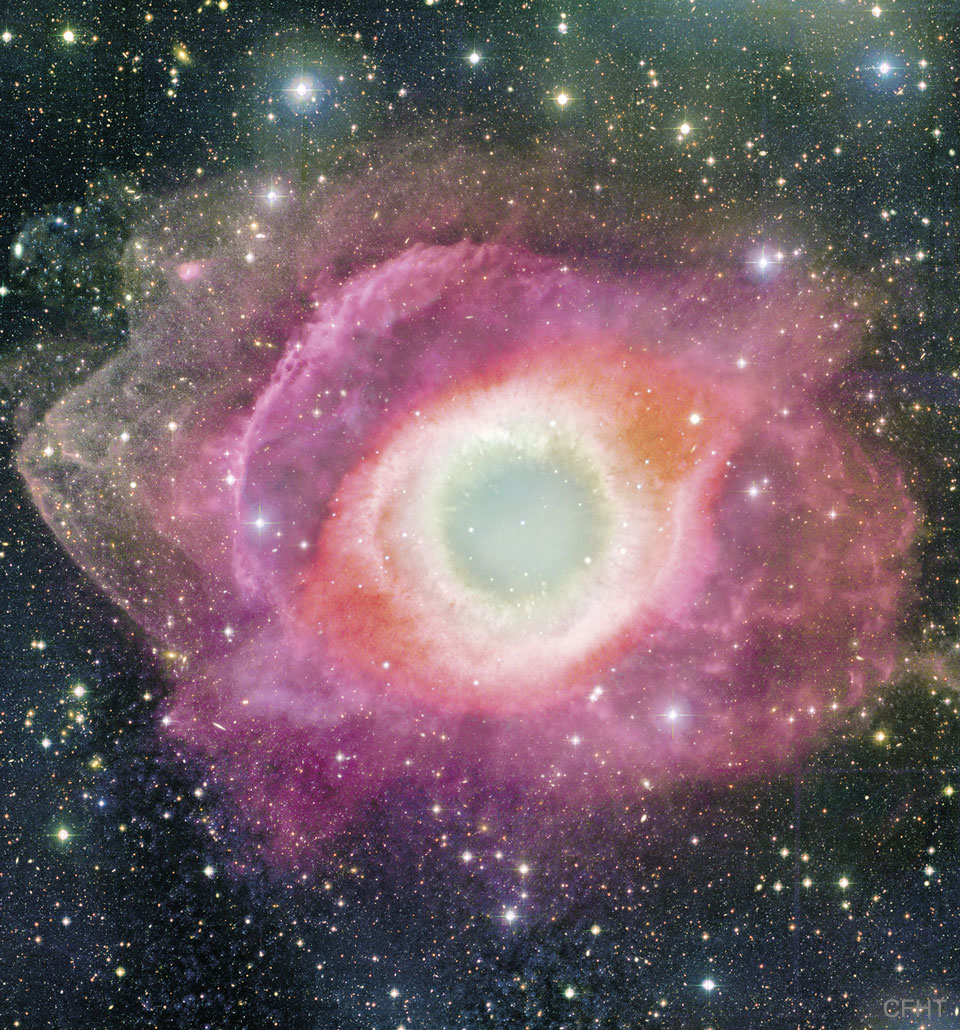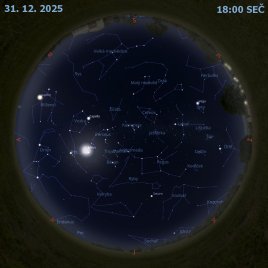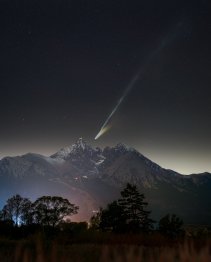Mlhovina Helix z CFHT

Uznání: CFHT, Coelum, MegaCam, J.-C. Cuillandre (CFHT) & G. A. Anselmi (Coelum)
Bude naše Slunce jednoho dne vypadat takto? Mlhovina Helix je jedním z nejjasnějších a nejbližších příkladů planetární mlhoviny, plynného mračna vzniklého na konci života Slunci podobné hvězdy. Vnější plyny hvězdy vyvržené do vesmíru se z našeho pohledu jeví, jako bychom se dívali dolů do šroubovice. Zbytek centrálního hvězdného jádra, které se nakonec stane bílým trpaslíkem, září světlem tak energetickým, že vyvolává fluorescenci dříve vyvrženého plynu. Mlhovina Helix, která dostala technické označení NGC 7293, leží asi 700 světelných roků daleko v souhvězdí Vodnáře (Aquarius) a měří asi 2,5 světelných roků. Snímek byl pořízen dalekohledem CFHT (Canada-France-Hawaii Telescope) z vrcholu neaktivní sopky na Havaji, USA. Na podrobném snímku vnitřního okraje mlhoviny Helix jsou vidět složité uzlíky plynu neznámého původu.
Seznam odkazů v popisu
- Wikipedia: Helix Nebula
- Wikipedia: Planetary_nebula
- Youtube.com: NGC 7293 Helix Nebula 3-D morphology animation
- APOD: 2020-02-09 Volný let ve vesmíru
- Wolfram.com: Helix
- NASA: White Dwarf Stars
- NASA: Ultraviolet Waves
- Youtu.be: How a Fluorescent Lamp Turns On
- SEDS.org: Planetary Nebula NGC 7293 (= Bennett 129) in Aquarius - The Helix Nebula
- APOD: 2004-12-29 Mlhovina Helix dalekohledy Blanco a Hubble
- Harvard.edu: Chandra: Note on Cosmic Distances
- NASA: StarChild Question of the Month for May 1999
- Wikipedia: Aquarius_(souhvězdí)
- Hawaii.edu: CFHT Astronomy Image Of The Month - March 2017
- Hawaii.edu: About the Canada-France-Hawaii Telescope
- Newsweek.com: Foto: Kočička na zádech :-)
- Wikipedia: File:Hawaii_in_United_States_(zoom)_(US50)_(-grid).svg
- Wikipedia: United_States
- Youtube.com: Zoom Into The Helix Nebula [720p]
- APOD: 2008-04-13 Podivné kometární uzlíky v mlhovině Helix
- HubbleSite.org: THE HELIX NEBULA (NGC 7293)
- Harvard.edu: High-Resolution CO and H2 Molecular Line Imaging of a Cometary Globule in the Helix Nebula
NASA Official: Phillip Newman Specific rights apply. NASA Web Privacy Policy and Important Notices
A service of: ASD at NASA / GSFC & Michigan Tech. U.
Odkaz na originální APOD


